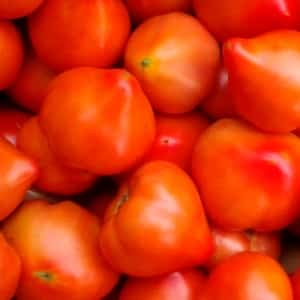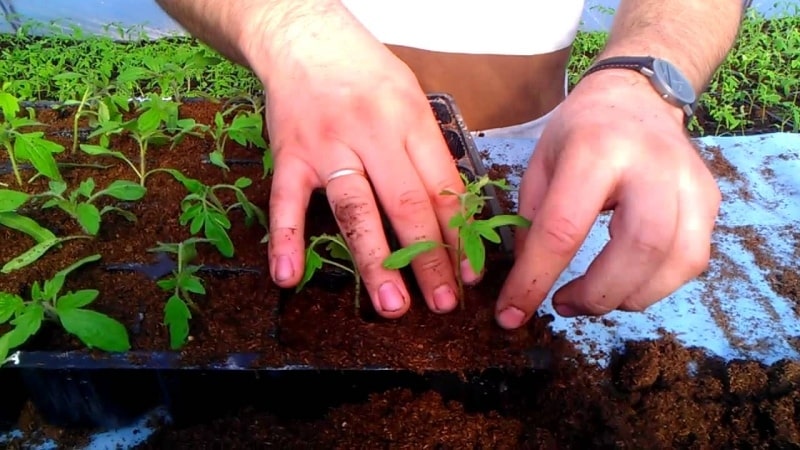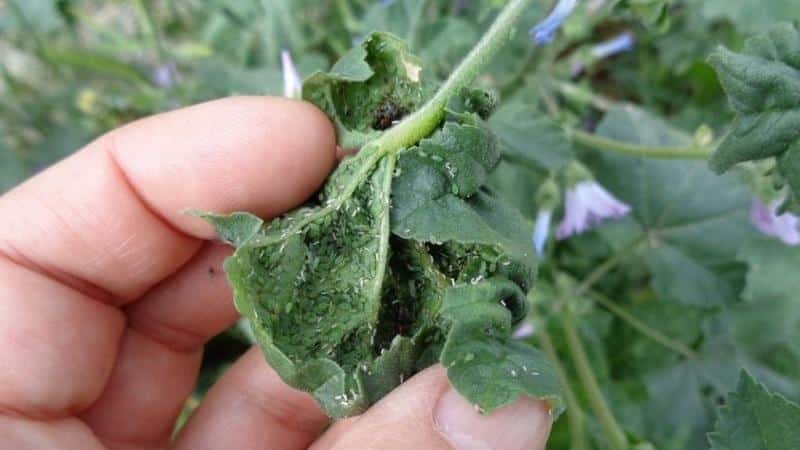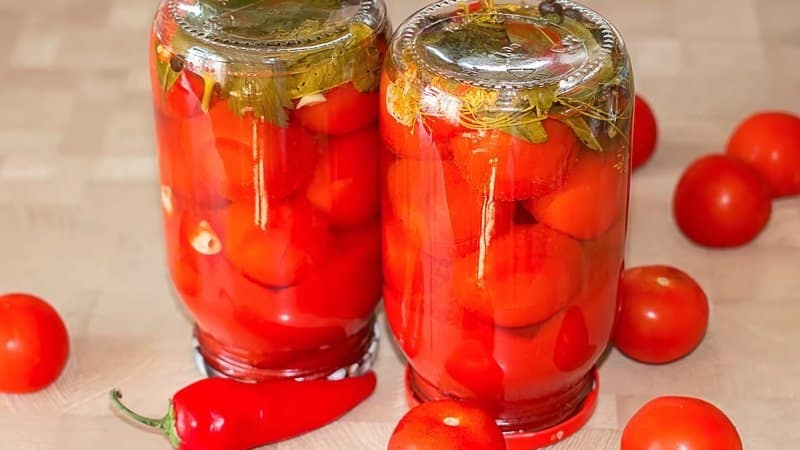An early-ripening and unpretentious variety that produces a bountiful harvest: the Primadonna tomato is a favorite of domestic gardeners
Tomatoes are a heat-loving crop. Therefore, the conditions of central Russia, Siberia and the Urals are considered unfavorable for their cultivation. Frequent rains and cold snaps, tomato diseases and pests make it impossible to grow many varieties outdoors in most regions.
Thanks to selection, agronomists have developed varieties and hybrids that can not only withstand negative environmental influences, but also have high yields. The hybrid tomato Primadonna is especially popular among them. Why is it so good, and how to grow it correctly - read on.
General description of the hybrid
Tomato Primadonna is a first generation hybrid. This is indicated by the designation f1. It was entered into the Russian state register in 2007. Since then, this variety of tomato crop has not lost its popularity.
The hybrid was bred by domestic breeders. It is intended for cultivation in the climatic conditions of most regions of our country.
Note! A hybrid is obtained by crossing two varieties. When seeds are planted from their fruits, the grown plants in most cases acquire parental characteristics. To grow the Primadonna tomato constantly, you will have to buy new planting material each time.
Distinctive features of Primadonna tomatoes
The main feature of Primadonna tomatoes is their cold resistance.They are suitable for growing in open ground in the central zone of our country.
The tomato fruits of this hybrid are bright red. They have a round shape with a well-defined elongated tip. Look how the fruits look in the photo.
The berries have a pronounced tomato aroma. They taste sweet with a slight sourness. The inside is meaty, but juicy.
Primadonna are universal tomatoes in gastronomic terms. Suitable for whole canning, fresh consumption, preparation of tomato products and hot dishes, freezing.
The hybrid is resistant to the most common tomato diseases. This reduces the need to treat it with chemicals for preventive purposes.
Main characteristics
The Primadonna tomato is distinguished by its unpretentiousness and productivity. It is suitable for growing both for yourself and for sale.
Characteristics and description of the variety:
| Parameter | Indicators |
| Bush type | Determinant. Grows up to 1.3-1.5 meters. Stops growing after the formation of the superior ovary. The stem is strong, bristly, with a small number of leaves. The leaves are smooth, large, dark green. The first inflorescence is formed above the 8th leaf, the next after 1-2 leaves. The fruits are formed in clusters, each of which produces up to 10 berries. Up to 7-8 brushes appear on one bush. The root system is branched, but not long. |
| Growing method | In the southern and central zones of our country it is recommended for growing in open ground. In the northern regions, the hybrid is planted in a greenhouse. |
| Productivity | High. One plant produces up to 8 kg of berries per season. For 1 sq. m place up to 5 tomatoes. |
| Fruit | Not large. One fruit weighs between 100-130 g. The outside of the pods is bright scarlet with a darker nose.Red and fleshy inside. Each fruit contains about 5 chambers with a large number of seeds. The fruits are fleshy and juicy. The taste is sweet and sour. |
| Transportability | High. The durable skin of tomatoes allows them to be transported over long distances. They can be stored fresh for more than a month. Do not crack. |
| Ripening time | Early ripening hybrid. The first harvest is harvested 3 months after sowing the seeds. In greenhouses it ripens even earlier. |
| Disease resistance | Has immunity to major tomato diseases. Rarely get sick late blight. |
Growing seedlings
Tomato seedlings begin to be grown two months before they are planted in open ground. In most regions, seeds are sown in March.
Before sowing planting material, you should familiarize yourself with the lunar calendar. It is believed that tomatoes planted on the correct lunar day germinate faster.
Seed preparation
Before planting the seeds, they are sorted out. Dense, light-colored seeds without stains or damage are suitable for use. It is important to check the expiration dates on the packaging.
Disinfecting seeds will prevent diseases from infecting plants. Usually, for these purposes, planting material is soaked for half an hour in potassium permanganate, diluted in a ratio of 1 g per 10 ml. After soaking, the seeds are washed under running water.
To speed up seed germination, they are soaked in growth stimulants or other methods are used.
The list contains the most common of them:
- Purchased drugs. Most often, Epin or Fitosporin are used to stimulate growth. Seeds are processed as indicated in the instructions on the package.
- Folk remedies. The most effective are: aloe juice, diluted in a 1:1 ratio with water, a soda solution, for the preparation of which you need to take 1 teaspoon of soda per glass of liquid, honey solution, prepared from 1 teaspoon of honey and a glass of water. Planting material is soaked in such stimulants for 12 hours.
- Plain water. To use this method, pieces of gauze are moistened in clean water. The seeds are wrapped in them. The fabric with the seeds is placed in a saucer, which is covered with film and placed in a warm place. The seeds are left in this form until germination. This takes 2-3 days.
Selection of soil and containers
To grow tomatoes you will need the right containers. This determines how comfortable the plants will feel.
For sowing seeds, choose large but shallow containers. It is not necessary to use special trays and boxes.
Pots are often made from scrap materials:
- instant noodle trays;
- plastic containers for herring and seafood;
- cake packaging;
- plastic disposable tableware;
- cut six-liter bottles.
For picking plants, use containers with a volume of 300 ml. Stores sell special plastic and peat pots. Often, disposable cups and cut-off bottles are used for planting seedlings.
All containers are disinfected before use. To do this, they are soaked for half an hour in a strong solution of potassium permanganate.
Soil for tomatoes is no less important than containers. You can buy it at a gardening store or make it yourself. In any case, soil mixtures are treated with high temperatures or a solution of potassium permanganate.
To prepare the soil for tomatoes, mix chernozem with humus in different proportions.Ash and “Superphosphate” are added to the mixture. To make the soil lighter, add one part of sand, sawdust, peat or crushed coconut fiber.
Planting seeds
Drainage (shell rock, small pebbles, crushed expanded clay) is poured into the bottom of the container for seedlings. The prepared soil is poured on top.
Make grooves in the soil 1 cm deep at a distance of 3 cm from each other. Seeds are grown in them at intervals of 2 cm. After this, the depressions are covered with earth.
The soil is moistened with a spray bottle with warm water, covered with film or glass and placed in a warm place. The warmer the room, the faster the seeds will germinate. Often boxes with planting material are placed near the battery.
This is interesting! Many gardeners prefer to grow seedlings the Chinese way. Its peculiarity is that the planting material is placed in a cold place for several days. Seeds are sown during the waning moon, located in the constellation Scorpio. Plants sprout in exactly one month.
Seedling care
To get healthy and strong plants, great attention needs to be paid to caring for the seedlings. The list contains the basic rules:
- After seed germination, the boxes are moved to a well-lit place. The film is removed after a week.
- Water tomatoes only at the root. Water should not fall on the above-ground part of the plant. For immature sprouts, use a pipette or syringe. After picking, water the tomatoes from a watering can or bottle. Use warm, settled water.
- Seedlings are picked after the first true leaves appear. Most gardeners do not advise pinching the central root, which is already damaged during transplantation.
- After picking the plants, the first fertilizing and watering are carried out no earlier than a week later.
- During the period of growing seedlings, three feedings are made. To do this, use complex fertilizers or vermicompost. For one plant, take half the portion indicated on the package. The last time tomatoes are fed is a few days before they are planted in a permanent place.
- Two weeks before transplanting, the plants begin to harden off. To do this, they are taken out to the balcony or outside, gradually increasing the time spent in the fresh air.

Planting plants in a permanent place
The seedlings are planted in a permanent place when the soil warms up. Landing times differ for regions with different climates:
- southern regions – early May;
- middle zone – second half of May;
- northern cities – first half of June.
Before planting tomatoes in open ground, the beds are prepared. To do this, they are dug up in the fall, cleared of plant debris and enriched with ash, lime and manure.
In the spring, the soil is dug up again. It is disinfected with a solution of potassium permanganate or other disinfectants.
The holes are dug in rows in a checkerboard pattern. For planting Primadonna tomatoes, a 50x50 or 40x50 pattern is used.
A tablespoon of ash is poured into each hole. The recesses are filled with water. Three days before planting tomatoes in the ground, they are watered and fed.
Immediately before planting, the plants are removed from the pots. They are placed in the holes, forming a root towards the center. The depressions are covered with earth.
Rules for caring for a prima donna
Primadonna tomatoes are one of the most unpretentious varieties to care for. Even novice gardeners will not have any difficulties growing it.
Although Primadonna tomatoes are a determinate variety, the bush needs to be formed. It is grown in 2 or 3 stems.
Stepchildren on the bushes of this hybrid are formed in minimal quantities. Therefore, the Prima Donna does not need stepsoning.
Tie up bushes of this hybrid Necessarily. Otherwise, they will simply break under the weight of the fruit.
Watered plants as the soil dries out. Watering should be plentiful, but not frequent.
Primadonna tomatoes are not too demanding on the composition of the soil. They produce abundant harvests even with minimal care and poor soil composition. Therefore, 2-3 is enough for them fertilizing per season.
Experienced gardeners recommend alternating mineral and organic fertilizers. They use both purchased and homemade products.
Foliar fertilizers are applied twice per season. Use products containing boron. They accelerate the formation of ovaries.
Errors during cultivation
Gardeners often make mistakes when growing tomatoes.
The list shows the most common:
- Watering tomatoes with a hose. This method of soil moisture is not acceptable for this crop. When using it, water gets on the greens, which increases the risk of plant disease. In addition, the water from the well and borehole is too cold.
- Refusal to loosen plants. After each watering, a crust forms on the soil. It interferes with normal air exchange in the roots and evaporation of moisture.
- Excessive watering. Waterlogged soil promotes the development of fungal and viral infections. With high humidity, tomato roots begin to rot. Under such conditions, the quality of the fruit also suffers, the taste of which becomes less intense.
- Stepsoning in hot weather. This increases the risk of plant infection. The best time for this procedure is evening or early morning.
Diseases and pests

The Primadonna tomato is resistant to most diseases characteristic of this crop. However, experienced gardeners do not neglect the rules of prevention.
To reduce the likelihood of tomatoes becoming diseased, they are planted in beds where nightshades have not grown for the past three years. You can't plant tomatoes next to potatoes.
Disinfection of seeds, soil and seedling containers is necessary to prevent infection of tomatoes. It is important to treat garden tools with disinfectants.
Compliance with the rules of watering and shaping will keep the plants healthy. For preventive purposes, plants are sprayed with Fitosporin.
Insects not only damage tomato bushes, but also carry viral and fungal infections. Therefore, it is important to regularly carry out preventive inspections to remove pests from plants.
To prevent insect damage to tomatoes, I treat them with special products. Most gardeners prefer homemade natural formulations, such as soap solution.
Features of growing a hybrid in open and protected ground
In most cases, the Primadonna hybrid is grown in open ground. Gardeners note that the highest yield is observed when planting tomatoes in a greenhouse.
When growing tomatoes in open ground, it is important to follow several rules. To help the plants adapt, they are covered with film for the first 14 days after transplantation.
Be sure to mulch the beds. Hay, straw or burlap are used as mulch.
Attention! When planting tomatoes in a greenhouse, you need to regularly ventilate the room. For this purpose, the windows are opened daily.
Harvesting
You can get the first harvest of Primadonna in June. The fruits are harvested immediately after they ripen, cutting with a knife or carefully twisting them.
Large berries are picked unripe on cloudy days. This will prevent plants from becoming infected with late blight.
Primadonna fruits are universal. They are stored for more than 6 weeks and are used for preservation and fresh consumption.

Pros and cons of Diva
Advantages of a hybrid:
- no need for stepsoning;
- high productivity;
- early ripeness;
- unpretentiousness to maintenance and soil composition;
- resistance to low temperatures.
No serious deficiencies were identified in the tomato.
Farmer reviews
Reviews from gardeners about the Primadonna variety are positive. This variety is popular in our country.
Angelina Sachuk, Klin: “I have been growing the Primadonna tomato in open ground for several years now. Excellent yield. One of the few hybrids that yields early even in our climate. Extremely easy to care for. The taste is normal tomato."
Irina Kireeva, Voronezh: “I grow Primadonna tomatoes for sale. It does not require special care. Gives high yields and ripens earlier than other tomatoes.”
Conclusion
Tomato Primadonna is one of the most suitable hybrids for our climate. It is not afraid of cold weather and is undemanding to the composition of the soil. Therefore, even the laziest gardeners and summer residents can grow it. The fruits are consumed fresh and canned. The tomato has a long shelf life, making it suitable for growing for sale.